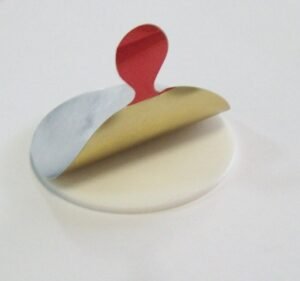When assessing a product, consumers understand the value of safe and trustworthy packaging. And when it comes to manufacturers who cater to the demands of the public, safety is always a priority. This is where the value of an induction seal comes in.
What Are Heat Induction Seals?
Once a container is opened, induction sealing foils are found on the container’s mouth. Induction foil seals protect the product and add an additional layer of assurance that the product is safe and without tampering.
The induction sealing foil adheres to the container’s mouth through the process of induction sealing. There are different types of induction seals, such as the one-piece induction seal and there are two-piece induction seals.
Two-Piece Induction Sealing Foil
This type of induction seal has both an upper and lower layer, adhered to one another with wax. The aluminum foil adheres to paperboard, and all these components are laminated with a polymer film. The seal liners are then introduced to the induction coil process to facilitate adherence to the container mouth.
Two-piece induction seal liners serve a dual purpose. Once the consumer removes the seal from the container, extra sealing is left on the container cap to increase protection from leakage even after the container has already been opened.
Two-Piece vs. One-Piece Foil Induction Seal
Both one- and two-piece foil induction seals do the primary functions of all induction liners:
- Protect against leakage

- Tamper-evidence
- Prolong shelf-life of the product
- Protect against water and air seeping into the container
Although similar in function, these two types of induction liners have different applications. One-Piece Induction Seal Liners cater more to one-use products. They are also used for products that are dry and need minimal protection once the packaging has been opened. Two-Piece Induction Seal Liners, on the other hand, are used for liquids and are more readily used when a product needs to be resealed once the container has been opened.
Induction Seal Liners vs. Other Types of Liners
There are numerous induction liner types in the market that manufacturers use for different applications. Some liners may not create seals but offer protection from product leakage, such as in the case of foam liners. There are also those which provide an extra layer of protection but do not provide tamper-evident sealing, such as in cases of pressure-sensitive liners.
Induction seal liners offer air-tight sealing along with tamper evidence. These seals are used in pharmaceuticals, food and beverage industries, cosmetics, and chemical industries. The seals are relatively inexpensive for the functions they serve and add a layer of protection and assurance that consumers trust.
Adeneli Packaging and Benefel Pty. Ltd.
Adeneli Packaging and Benefel Pty Ltd. can help you with induction seal liners. Our experts are on standby to take your calls and chats. Whatever product you may have, we have the perfect induction foil seal for you. Product consultation is free and we are happy to develop partnerships with our customers by supplying consumable products that work well with packaging machinery.





Follow Us